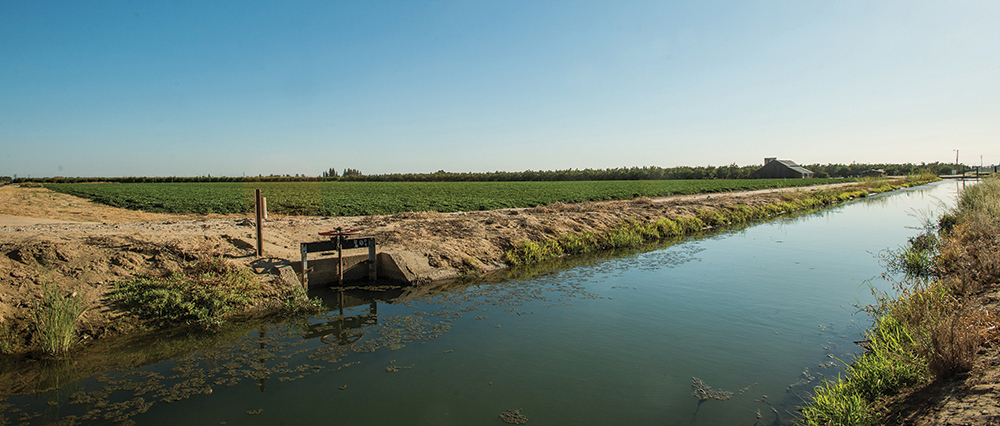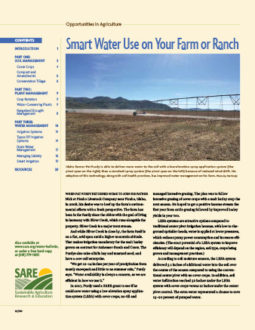
Farmers and ranchers in many parts of the country are taking steps to make irrigation systems more efficient and cost effective. Regardless of which irrigation system you use, there are common ways to improve your management of irrigation water.
- Improve soil health. The soil management practices described in this bulletin increase organic matter, aggregation, infiltration, waterholding capacity and rooting volume. They reduce crusting, erosion and surface evaporation. All of this maximizes a crop’s ability to use the irrigation water you apply.
- Use water conservatively. Schedule irrigation times and amounts based on data from soil moisture sensors and weather forecasts, and based on the needs of the crop at different growth stages. Work with local specialists to determine the best ways to integrate sensor technologies on your farm. There may be other ways to modify your irrigation system to make it more efficient or opportunities to replace one system for another. Careful water management can also help manage salinity issues.
- Harvest and reuse water. Water storage systems can be used to catch and store rainwater to supplement your needs, depending on your state and farming circumstances. If available, explore options for using good-quality recycled wastewater. EPA’s Guidelines for Water Reuse may help you find out your state’s regulations.
Contact an NRCS technical service specialist to develop an irrigation management plan that will control volume, frequency and flow rate to promote desired crop response, optimize water use, improve water quality, minimize irrigation-induced soil erosion, manage salts in the root zone and reduce energy consumption.
An irrigation audit may help determine what goals or outcomes are best for your individual farm. The Texas Water Conservation Implementation Task Force uses an audit with three phases:
- Data collection. Key information may include sketches or maps of fields, locations of water supply networks, meters or measuring points, and inventories of pumping plants. Crop types, field slope, soil types and textures, and infiltration rates are also important. Irrigation scheduling method, previous water use data and prior audit results can also be significant, along with well construction information and well testing records.
- Onsite audit. A physical irrigation audit should verify water use by assessing water and energy use efficiency across the farm.
- Audit report. Data gathering and onsite audit phases should provide enough information to generate a report about current equipment, recent irrigation schedules and identified water uses throughout the operation. The irrigation audit report generally provides practical options for scheduling maintenance to improve irrigation systems and serves as a guidance tool for making innovative management changes.
